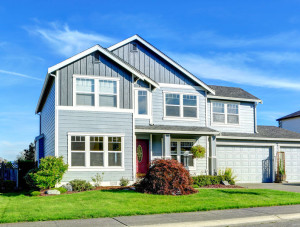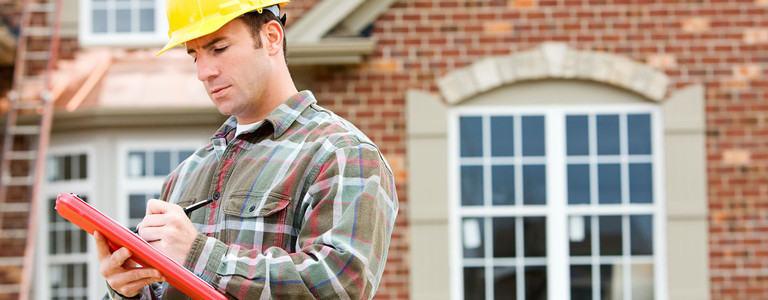 Garage doors are a convenient feature of modern homes, providing both security and ease of access to your garage. However, these large mechanical systems can also pose significant safety risks if not properly maintained or used. In particular, families with children or pets should be especially vigilant. Here are some essential safety tips to help keep everyone in your household safe around garage doors and ensure the best practices for their use.
Garage doors are a convenient feature of modern homes, providing both security and ease of access to your garage. However, these large mechanical systems can also pose significant safety risks if not properly maintained or used. In particular, families with children or pets should be especially vigilant. Here are some essential safety tips to help keep everyone in your household safe around garage doors and ensure the best practices for their use.
1. Regular Maintenance Is Key
The foundation of garage door safety begins with proper maintenance. A well-maintained door operates more efficiently and with fewer risks of malfunction. The first step is to have a professional technician inspect and service your garage door at least once a year. This includes checking the springs, cables, rollers, and tracks for wear and tear. Over time, these components can weaken, causing the door to malfunction or even fall.
In addition, lubricating the moving parts of the garage door—such as the hinges, springs, and tracks—can reduce friction and prolong the lifespan of your door while also ensuring smooth operation. If you notice any strange noises, such as grinding or squeaking, it’s a signal that something may need to be adjusted or repaired.
2. Educate Your Family About Safe Garage Door Operation
One of the simplest yet most effective ways to ensure garage door safety is educating your family members, especially children, about how to interact with the door. Children are often curious about how things work, and it’s easy for them to treat a garage door as a plaything without realizing the risks.
Never let children play near the garage door—explain that it can be dangerous to stand or play too close to the door while it’s moving.
Teach kids not to operate the door: Only allow adults to use the garage door opener. Kids should never be allowed to play with the garage door remote or the wall-mounted opener button.
Make sure the garage door opener button is out of reach of small children, ideally mounted at least five feet above the ground.
By ensuring that everyone in your family understands the potential hazards and operates the garage door safely, you can reduce the risk of accidents.
3. Install Safety Features on Your Garage Door
Many modern garage doors come equipped with a range of safety features designed to prevent accidents. One of the most critical features is the photo-eye sensor. This device uses infrared beams placed near the floor of the door frame to detect objects or people in the door’s path. If the beam is interrupted while the door is closing, the sensor will automatically reverse the door’s movement, preventing injury or damage.
Check the photo-eye sensors regularly: Ensure they are aligned properly and free from obstructions like dirt or spider webs, which could interfere with their operation.
Test the door’s reversing mechanism: To do this, place a small object, such as a piece of wood, in the door’s path and activate the door. If the door doesn’t reverse upon contact with the object, the safety sensors or reversing mechanism may need adjustment.
Additionally, some newer models feature auto-reverse and pinch protection technology, which prevents the door from closing if there’s any obstruction. Make sure your door is equipped with these features and that they are functioning correctly.
4. Be Cautious with Remote Controls and Keypads
Garage door openers often come with remote controls or keypads that allow easy access to your garage from a distance. While convenient, these devices can also pose a security risk or safety hazard if not used correctly.
Secure your remote control: Keep your garage door remote in a safe place inside your home and never leave it in your car or visible in a vehicle. If someone gains access to it, they could potentially gain access to your garage.
Use a secure code for keypads: If you have a keypad entry system, make sure to use a strong, hard-to-guess code. Avoid using obvious combinations like “1234″ or “0000,” and change the code periodically.
If you have guests or service people needing access to your garage, consider using a temporary or one-time-use code to maintain security.
5. Teach Safe Practices for Pets
Pets, especially dogs, are often curious about the movements and sounds associated with the garage door. However, if they’re not trained to stay away from the door, they could be at risk for injury.
Keep pets away from the door: Pets should never be allowed to roam freely near the garage door when it’s opening or closing. Their curiosity might lead them to wander underneath the door as it’s moving, which could result in injury.
Supervise pets: When entering or leaving the garage, always supervise your pets and make sure they are safely inside before operating the door.
Train your pet to stay clear: Teaching your dog to avoid the garage door area can help prevent accidents. You can use commands and positive reinforcement to train your pet to stay away from this potentially dangerous area.
6. Use Caution When Operating Manually
If you ever need to open or close the garage door manually (for example, during a power outage), be extra cautious. Garage doors can be extremely heavy, and lifting or lowering them can be dangerous without proper technique or equipment. Always use the manual release cord to disengage the door from the motor, and never attempt to manually lift a door without the proper safety precautions.








